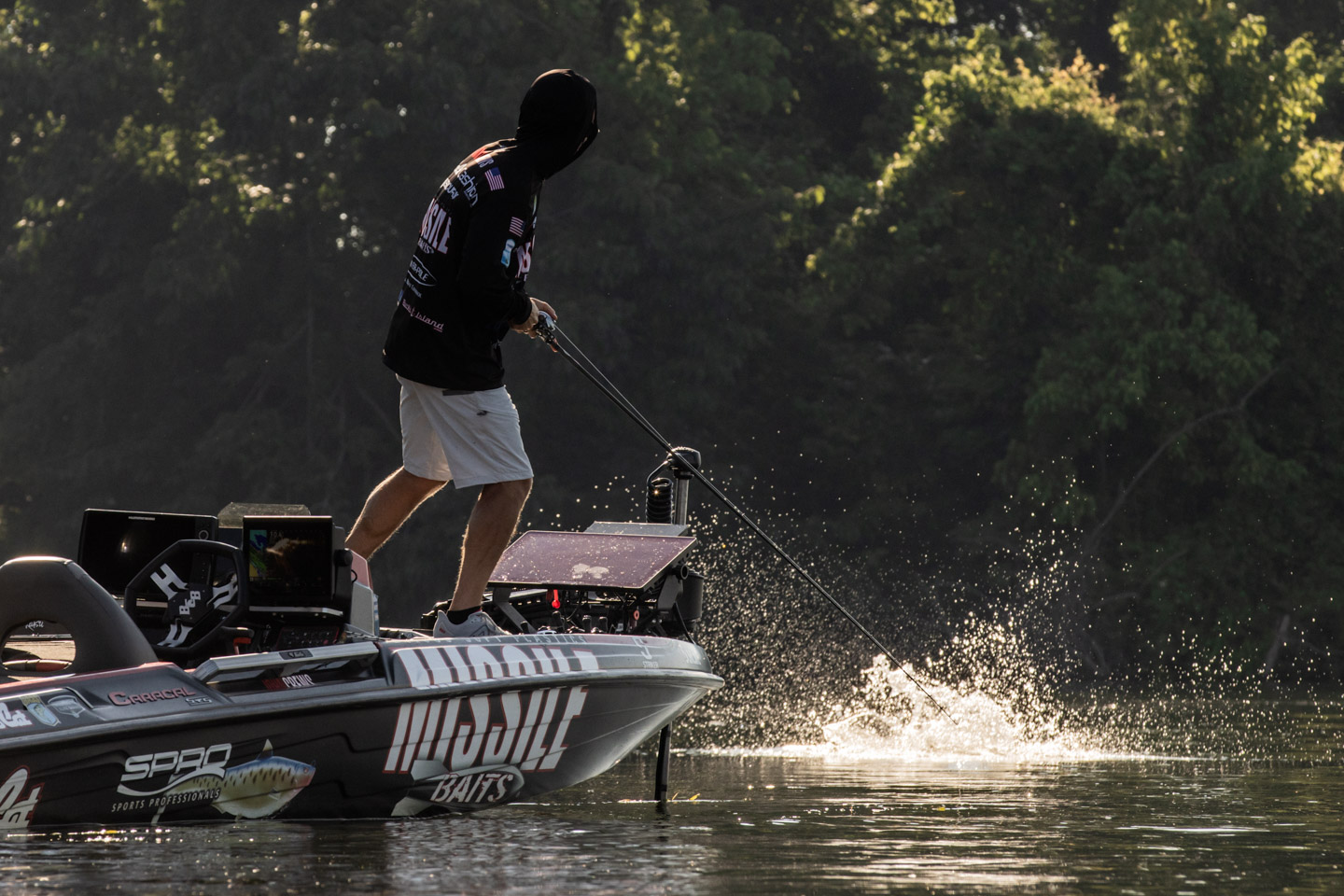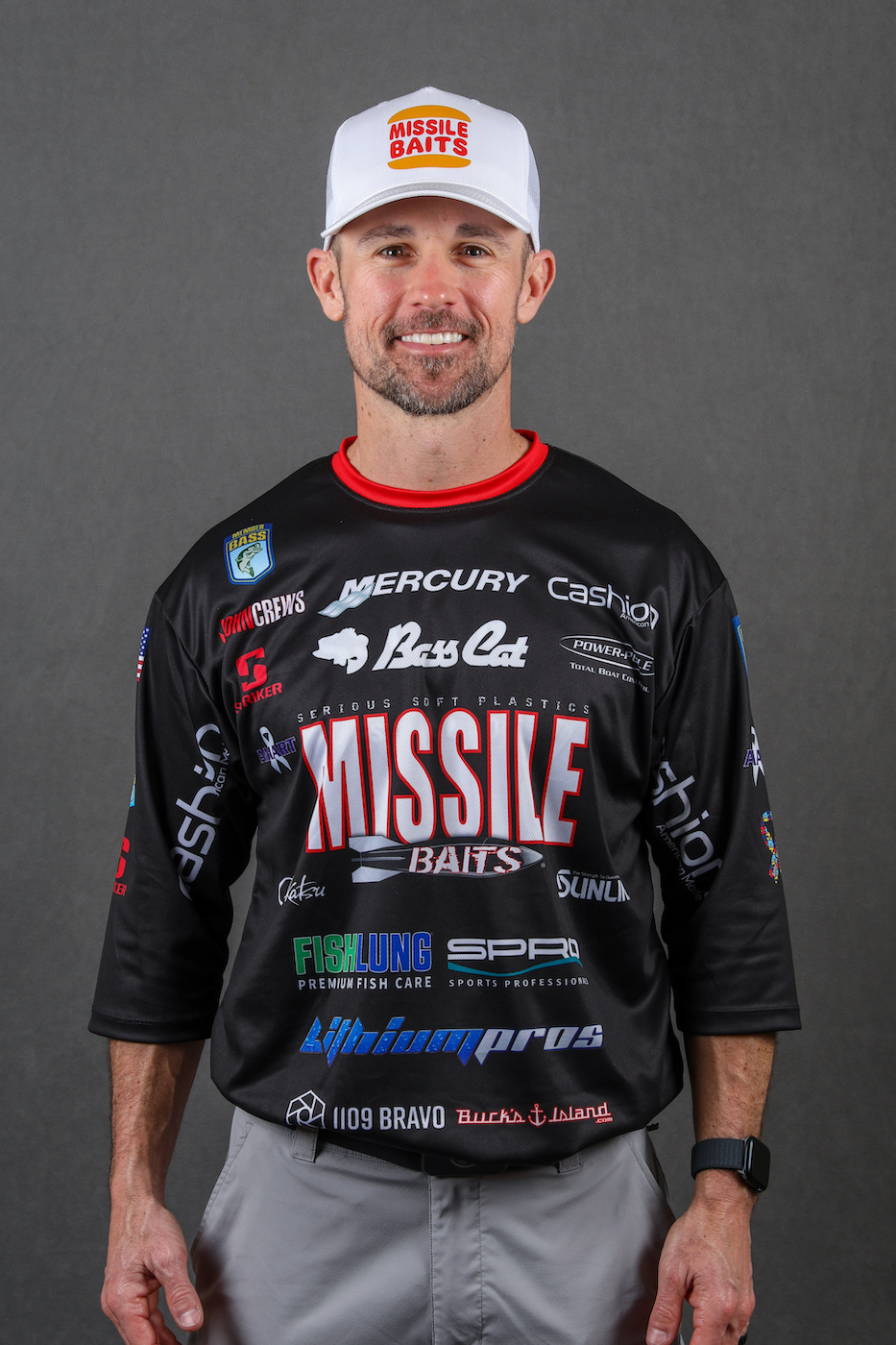
You may have seen the footage of me throwing a topwater bait at the Wheeler Lake Elite event we fished earlier this year, and catching fish on it during the middle of the day. Topwater baits get a bad rap about only being “low light” lures. While it’s true surface plugs may be most productive early in the morning and later in the evening, they can produce throughout the day when the conditions are right.
Heading into the Wheeler Lake event, it was common thought amongst the field that it was going to be won with some sort of scenario involving forward-facing sonar. For the record, it was won by longtime Elite Series pro Cliff Price using a bladed jig, but I really had a shot at it with a topwater being a major part of my plan.
I had a two-part program that included a bladed jig and Missile Baits Spunk Shad as my trailer, but nearly half of the fish I weighed – and all of my biggest ones – were caught on a topwater plug. Here are the basics of what it takes to capitalize on the opportunities that were present for me to utilize surface plugs during the day.
Topwater lures can be very effective during the middle of the day, especially for those big bites that really make a difference at the scales. The key is to choose targets that give you the best opportunity to be successful. As far as areas go, when I’m looking for big topwater bites, I look for isolated cover such as individual laydowns or stickups in the water. Grass beds can be really good and shade lines are great places to look for.
The big question is which type of topwater bait to throw when. The categories I choose are walking baits, poppers, ploppers, frogs and buzzbaits. Each has their own place and time, and here is the way I break them down.
When I’m looking for the slowest bait that causes the most commotion on the surface, I turn to a walking bait like the SPRO Haint 128. These baits have the most drawing power, so fish will come from way off to strike, and they are the most castable of the categories. They are best on slick water to a slight chop and with sparse cover to avoid snagging with the treble hooks
If the primary cover I am targeting is grass, or I need to skip the bait, then I turn to a SPRO Bronzeye Frog or Bronzeye Popper. These baits can be very versatile, but they are good around heavy cover because they come through grass well. These are the four-wheel drive topwater baits.
Poppers are the category of baits I tend to throw the least, but they are very effective when I need to keep the lure in one place. These baits are very effective during the postspawn or in the fall when baitfish are small.
Plopper style baits are best for me when the bass are feeding on bluegill. With this type of lure, I tend to cover a lot of water, moving the lure past any visible cover I can find. I don’t think these lures are good stop-and-start lures; I prefer to keep them moving steadily. Because of their treble hooks, they are not good around grass if it is too heavy, but I do throw them around grass edges.
If I want a noisy lure that is better around the grass, I turn to a buzzbait. It is similar in class to the plopper but is a lot better around grass. I tend to use this at times when there are bass feeding on bluegill around grassbeds and also during the shad spawn. My favorite way to rig a buzzbait is to remove the skirt and put some sort of toad type trailer on it, and I always throw a Gamakatsu trailer hook on there for short strikers.
I do tend to change out the tail hooks on most of my topwaters with a feathered Gamakatsu treble hook. I keep a lot of white feathered hooks around but will customize them with markers to give them an accent color to try and attract fish.
I throw all of my big topwaters on 50-pound test Sunline XPlasma braid. On smaller topwaters like a popper, I use the same weight, but turn to Sunline AMZ Braid because it is a little thinner, which helps casting the smaller baits.
I throw my big topwaters, like Plopper 110 sizes and larger on the Big Bait rod from Cashion. It’s a 7-foot, 10-inch parabolic rod I can make long casts with, and it handles them the best. For all other topwaters except for a frog, I’m using the Cashion Icon Series 7-foot medium-heavy topwater/jerkbait rod.
Topwater baits are a great way to put a big bite or two in the boat during a tournament, and they work at times when many think they won’t. So mix it up and try them at times you wouldn’t normally throw a topwater. I think you’ll be surprised at what you find.





